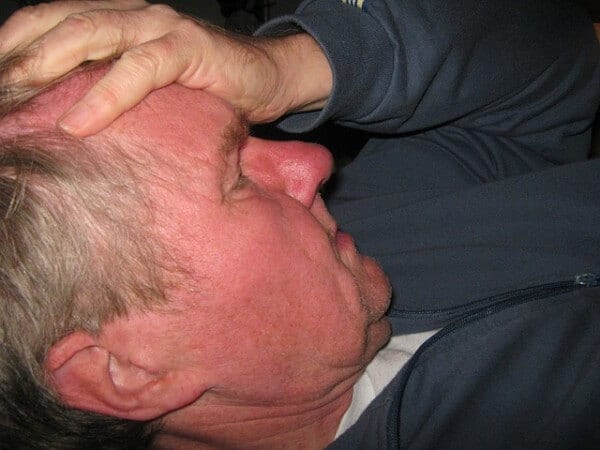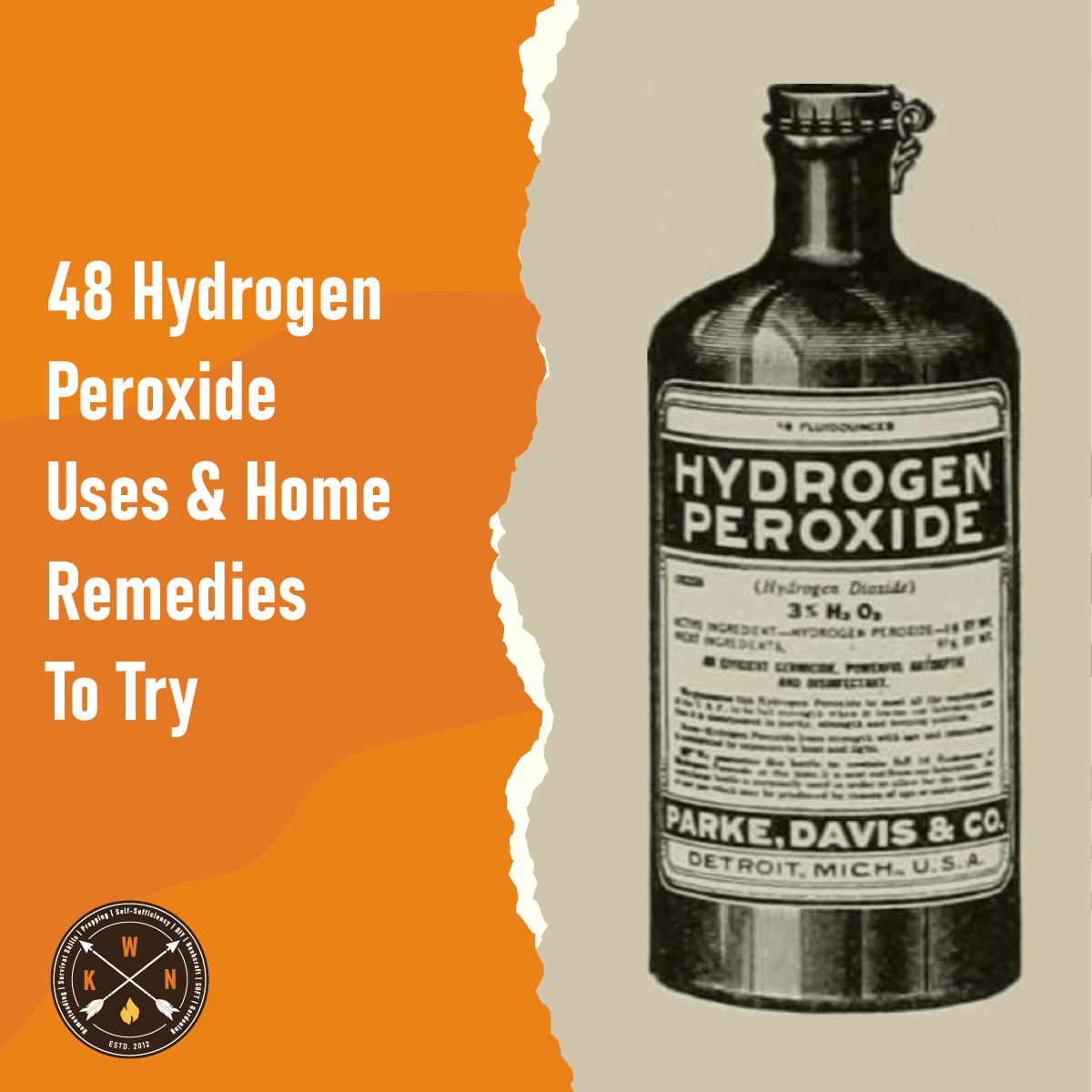
Water. It’s pretty important stuff. Our bodies are made up of ¾ water content and we lose around half to a whole gallon of it a day through sweating and urination. Without it, you can become toast within a mere 72 hour period, but with it you could survive for 3 weeks upon it alone.
Beyond the more severe of circumstances however, water is also pretty important for staving off potential dehydration headaches and here we take a detailed look into the world of these headaches, as well as going beyond this and onto the details of water seeking should disaster strike.
Table of Contents
ToggleDehydration Headaches: The science behind them
So, we all know that dehydration headaches are quite obviously caused by a lack of water. However beyond this, factors such as physical exertion, illness and the physical environment around us (and its respective heat levels) can all serve to complicate the landscape.
Generally speaking, people intake far less water than the levels that our bodies ideally need, with such levels standing on average at around eight cups or half a gallon… and that’s every single day (which will obviously increase the hotter the environmental and the more demanding the physical exertion that you undergo). Drink less and you risk dehydration.
Why does dehydration lead to headaches?
A commonly asked question about dehydration headaches is why they tend to affect that specific organ, and seemingly not the rest (or at least not to our knowledge through pain or other symptoms). And as a simple answer to this, we must consider the actual bodily process of dehydration, where we sweat out our water content. What’s more, few understand that it’s not only the loss of water that can cause dehydration and the consequent physical issues, but moreover the loss of essential salts (such as sodium and potassium); the depletion of these two particular elements through sweat and then having a limited intake of water to top up our levels, once more results in shifts in our body’s chemicals.
And the most sensitive to such shifts is, of course, our brain, as it essentially notes the changes that are occurring and attempts to notify the person of these by way of a headache; most specifically dehydration causes the brain’s blood vessels to dilate, which can then go on to lead to swelling.
Going into more detail: How to spot a dehydration headache over and above normally occurring headaches
Deciphering between a normally occurring headache, and one that is specifically caused by dehydration can sometimes be a tough ask. However, the following considerations should help you in establishing whether or not a lack of water intake is behind you headache.
Does your headache have the following characterise?
If you find that your headache specifically gets worse by movement (such as bending down, climbing stairs or running) then the chances are that it is a dehydration headache.
It’s also worth noting that dehydration headaches can occur all over the head, and if you tend to experience them in one area only, this doesn’t prevent them from happening in other areas in the future.
Are you suffering from other dehydration symptoms?
Other dehydration symptoms may be overlooked or relatively unnoticed as they aren’t necessarily painful, however if you’re suffering from a dry mouth, tiredness, increased blood pressure or nausea, then it’s safe to say that all may be linked, and all are likely down to dehydration.
Fully assess the situation you find yourself in
Sometimes, just taking the time to consider your circumstances will help you to establish whether or not you are suffering from a dehydration headache. Consider whether you have been exercising or sweating due to high temperatures, think about whether you’ve consumed any alcohol or have suffered from diarrhoea, vomiting or sickness, all of which are sure fire signs of dehydration.
How to easily identify a dehydration headache: Other symptoms
Many people miss diagnose or fail to recognise a dehydration headache simply because of the pretty demanding levels of water intake that our bodies need. There are many symptoms of dehydration that go beyond a fuzzy or painful head, which specifically can include:
– Darkly coloured urine, as well as passing limited amounts whilst going or attempting to go to the piolet,
– Lack of energy and general grogginess,
– A feeling of being light headed, or passing out completely.
Dehydration headaches: Ways to speed up recovery
As well as drinking more water (obviously!) there are other ways in which you can overcome a dehydration headache faster, and here I outline the four main ones…
- Get plenty of rest
Rest helps to alleviate the painful symptoms of a headache and the body tends to heal best and most quickly when asleep. So if you can put your feet up and have a quick nap.
- Apply a cold compress
A cold compress can not only serve to be physically comforting, but can help to bring your temperature down, which in itself aids in overcoming dehydration.
- Massage your neck
This will increase the blood flow to the brain.
- Be careful of what you eat and drink (and don’t smoke)
Whilst you’re suffering from the effects of a headache there are certain forms of food and drink that can worsen the situation, this specifically includes caffeinated or carbonated drinks.
An additional habit that you may want to limit for the immediate moment is smoking, which can cause all sorts of havoc upon a brain that is already struggling with sufficient blood flow.
Dehydration headaches: Natural helpers
If you wish to avoid using drugs to overcome your headache then you can try the following natural remedies:
– Lavender oil – Try massaging a tiny drop of lavender oil onto your forehead and temples.
– Peppermint tea bags – Try wetting two tea bags and placing them over your eyes for 15 minutes.
– Rosemary tea – You can try drinking one cup of rosemary tea, as this is said to stop a headache from becoming worse.
– Lavender, Peppermint and Coconut Oil – Mix these three elements together and apply to the temples, forehead and neck and leave for 30 minutes (ideally whilst you rest).
Dehydration: Going beyond the headaches and onto something more serious
One of the most life threatening of all possibilities should you find yourself living off the wilderness for any period of time after a disaster is that of dehydration, and beyond the symptoms listed earlier the fact remains that the eventual and final of symbols of complete dehydration is death. So let’s move on to being prepared for disaster and avoiding the grave circumstances that being without water can present.
Dehydration and Dehydration Headaches outdoors and in the wilderness
- Be prepare before disaster even strikes
First and foremost, you should ideally be packed and prepared for if disaster strikes. We recently published an article upon this very subject where we covered the essential topic of a Bug out Bag. Within this, we stressed the importance of keeping fluid packed (as well as packing water content based foods). So, if you’ve followed this advice and disaster does strike, you’ll already be on firm footing with a water source to keep you going whilst you run through the remaining tips.
For those who are less than prepared however the tips below may not pay to be undertaken with any more urgency than usually, as retaining as much water as you can, and avoiding sweating as much as possible, is paramount.
- Rest frequently, keep as cool as possible and be on the lookout for the symptoms of dehydration
Resting frequently, particularly during the hottest parts of the day, is essential when you don’t know where your next drink is coming from. Be vigilant along your travels and wary of the time and your location. If you are very thirsty and lethargic, you are likely dehydrated, especially if you are also experiencing a dehydration headache as well. Reevaluate your plans and get to a clean water source A.S.A.P.
- Remember that water sources aren’t just the impossible to find oasis
Water sources include everything from fruit and veg right through to the trickling stream, so remember to look for more than what may be traditional water routes.
- Be aware of drinking water and its contaminates
So, you’ve found water… great, right? Well, not quite. When suffering with dehydration and a dehydration headache, your decisions may well be compromised and you may not be thinking clearly. You see water sources in practically every part of the world are very rarely pure, and generally tend to include contaminants to greater or lesser degrees. This most specifically can include: turbidity, toxic chemicals, bacteria, viruses and parasitic worms.
This is again where my Bug out Bag blog post would have come in handy, as it covers all of the items required for ensuring that drinking water is safe through various purification tools.
- Look out for the signs of water that is close
There are many signs that a water source may be close, so always be on the look out for the following:
– Rocky terrains and crevices (rain water can frequently collect in these areas).
– Muddy, squishy or damp ground.
– Green vegetation, such as grass, can indicate that a water source may be close.
– Animal tracks or collections of animal habitats.
– Insects (where there are plenty of insects you’re almost certain to find a water source).
– Birds (birds tend to circle watering sources/holes, so keep one eye on the skies).
- Gather some form of water carrier
If you have no bottle prepacked then you should remember to look out for something that can be used to carry your water once you find it. Most likely this will be some form of wood that can be cut down and carved into a container.






